In the Qutb complex in Delhi, there is an astonishing structure that is thought to be over one thousand years old. It is a pillar that stands 7.2 meters tall measured from the top to the bottom of its base, of which 1.1 meters of it is underground.
The base itself sits on a grid of iron bar that has been soldered with a lead into the top layer of the stone pavement. The diameter of the pillar is wider at the base than at the top, and the entire weight of the object is estimated at more than six tons. The pillar is made of iron but, strangely, it never rusts.
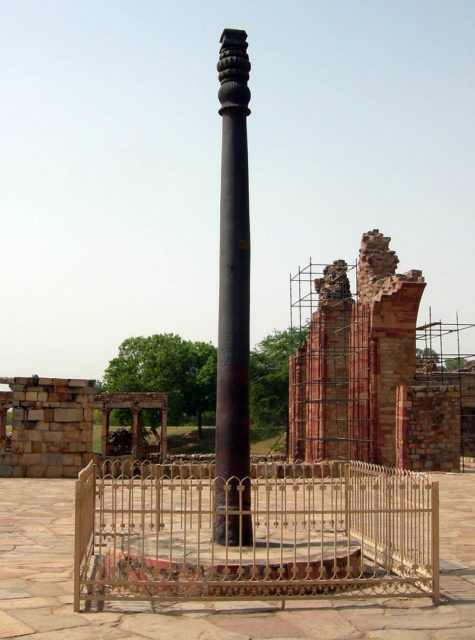
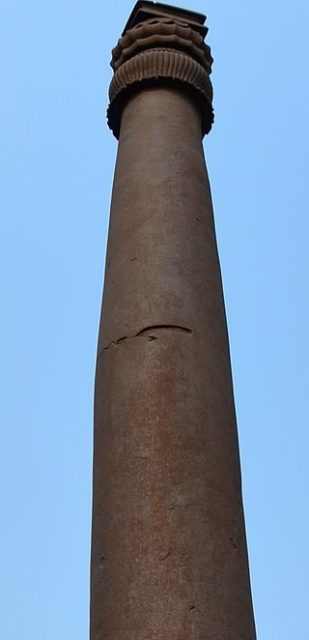
The pillar is covered in inscriptions; the oldest is in Sanskrit and historians have dated the markings to 375-415 AD. The description on the pillars appears to be a eulogy of the king Chandragupta II– it states that he has left the earth. There is still a lot of debate about whether the King was alive or dead at the time of the writing.
It is not known why the pillar stands where it does, and it is even thought that this is not its original location. No one knows its exact origin. One of the theories is that the pillar was moved from a Tomar temple to where it stands today. This has been suggested by archaeological evidence and temple architecture. The theory about it being moved is based on an inscription on the pillar.
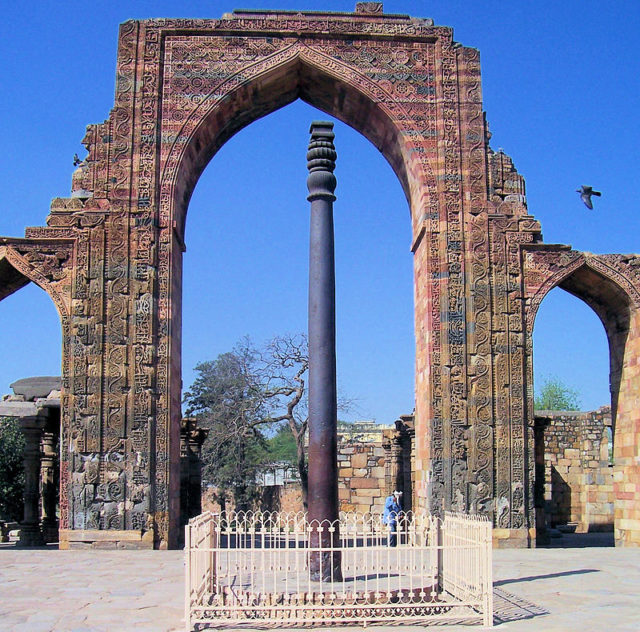
The iron itself has a high level of phosphorus; when that is combined with the iron oxides as the weather goes from wet to dry, the film is formed. The smiths of the time did not add lime as people do today, and they used high phosphorus wood, which is why the mineral levels are so high. The theory of how the processing, the structure, and the properties of the iron affect the pillar is called the “Mixed Potential Theory.”
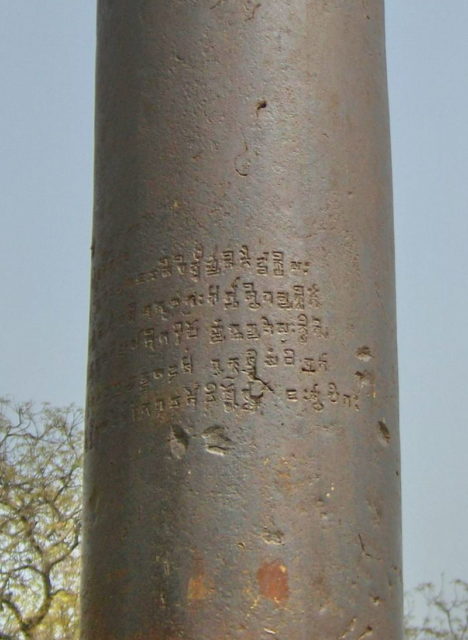
Another mystery is about why the pillar hasn’t rusted away. There are two main theories about this. The Indian investigators favor the first concerns the materials used and this theory. The second is that it doesn’t rust due to its surrounding environment; the foreign investigators favor this idea. From the scientific analysis, one can see that the pillar was created by forge welding of wrought iron. It is thought that there is a passive protective film on the iron caused by the particles and minerals in its structure.
Surprisingly, the rust-resisting pillar is not the only one of its kind. Other large and ancient Indian artifacts having the same properties are found at Mandu, Dhar, and Mount Abu. There are also few cannons that show the same rust-free properties. The technology and skill of the ancient metallurgists of India exceed the skills and abilities today.
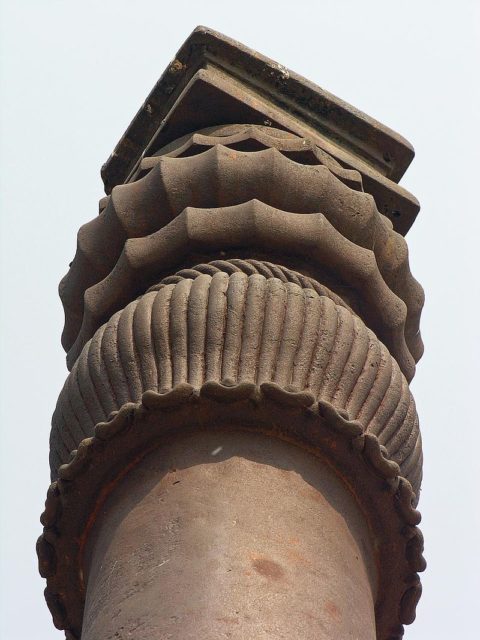
Unfortunately, as with many man-made wonders, man is taking its toll on the continuing survival of the artifact. A fence was finally placed around the Iron Pillar of Delhi in 1997 due to the damage caused over time by people touching the surface. The naturally occurring protective film can only stand a certain degree of influences, and there is also discoloration on the lower portion of the pillar.
Historians and scientists will continue their discussions about the meaning behind the inscriptions, but we may truly never know why it was built and where its original site was.
